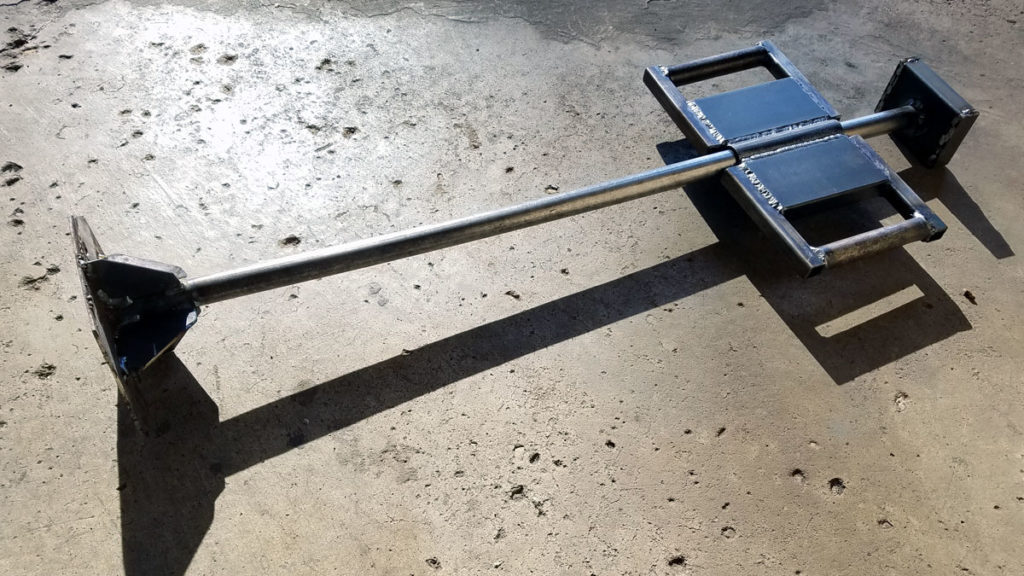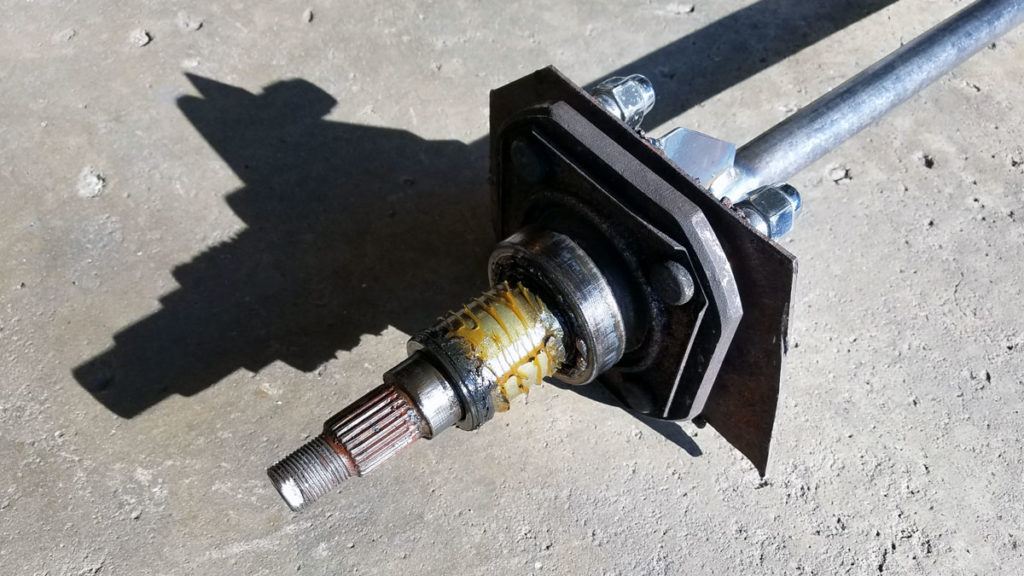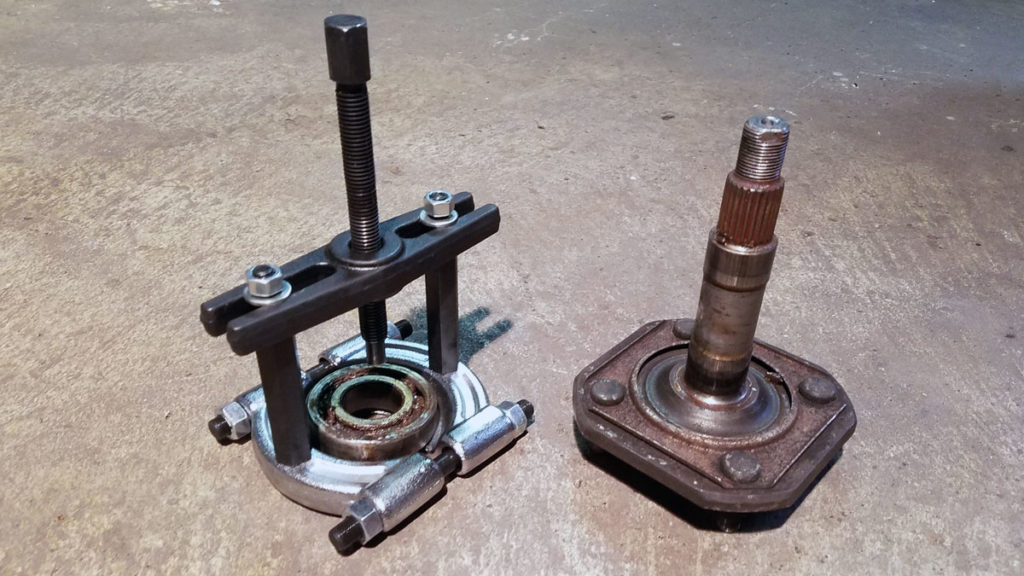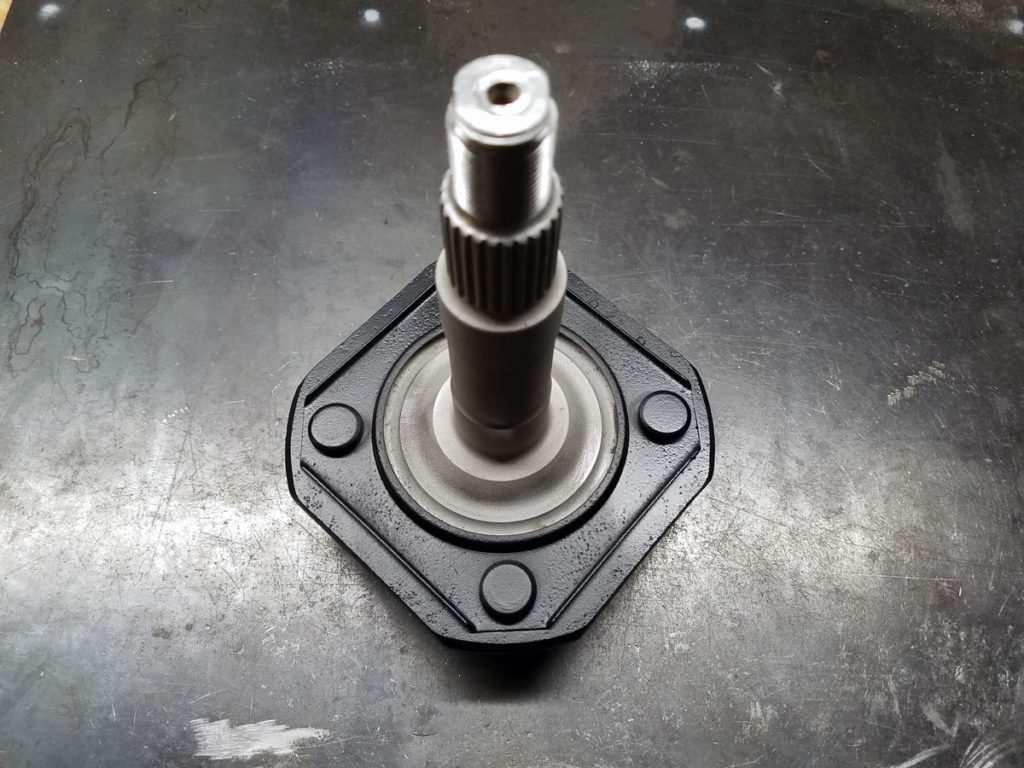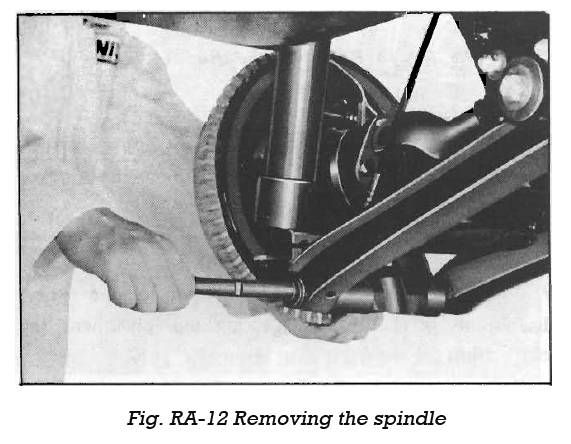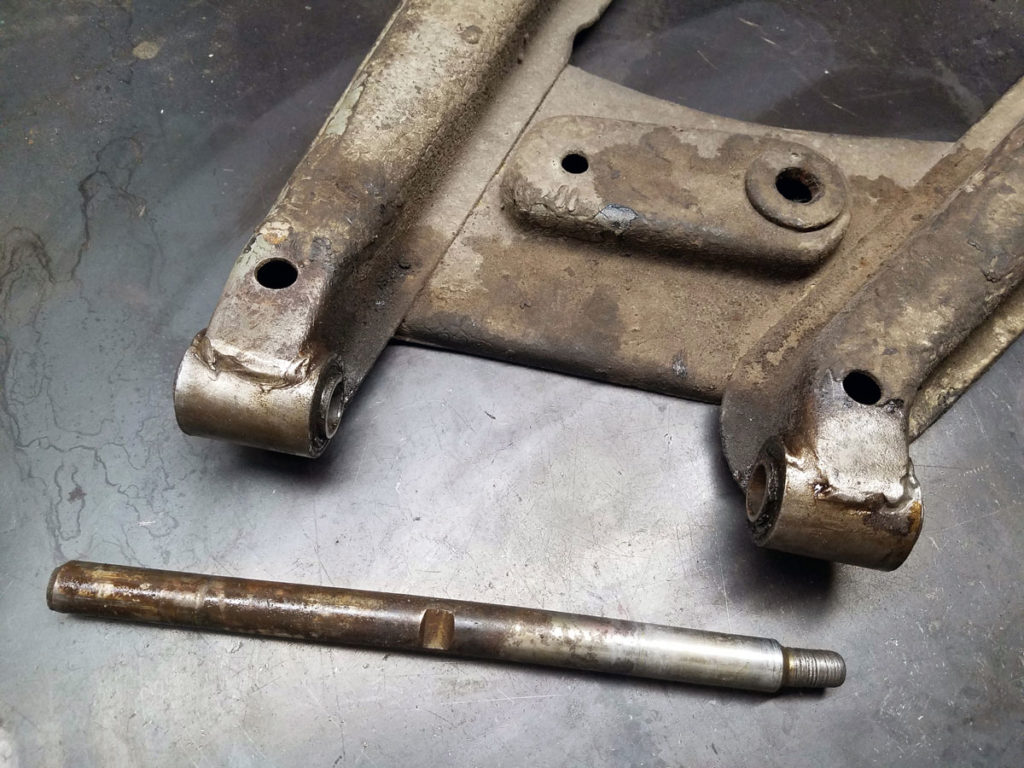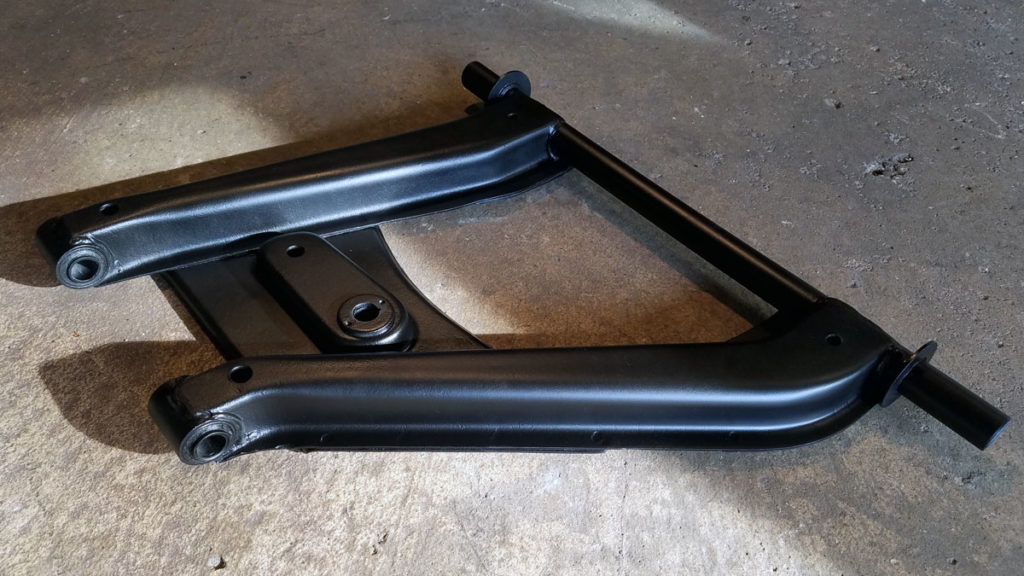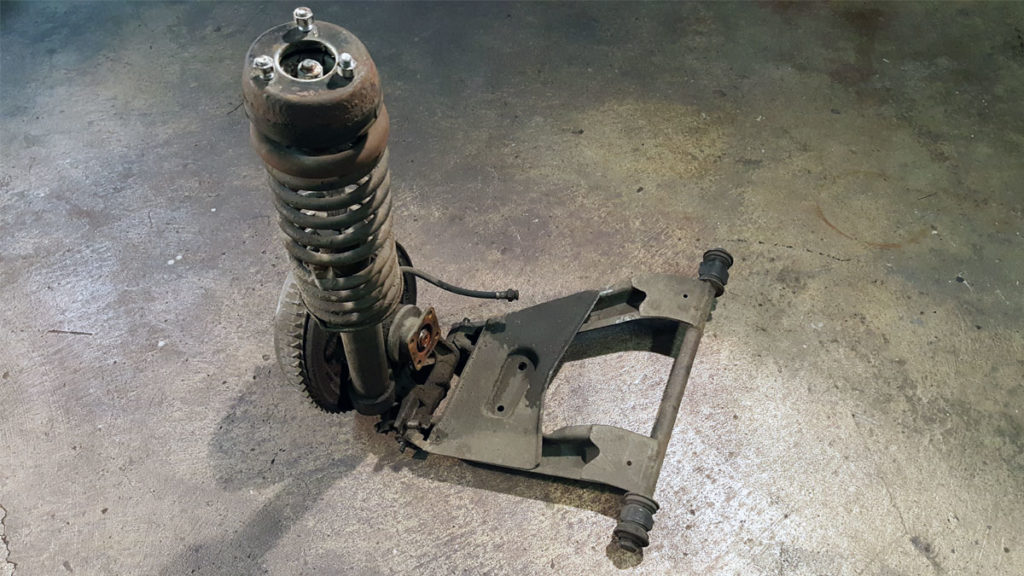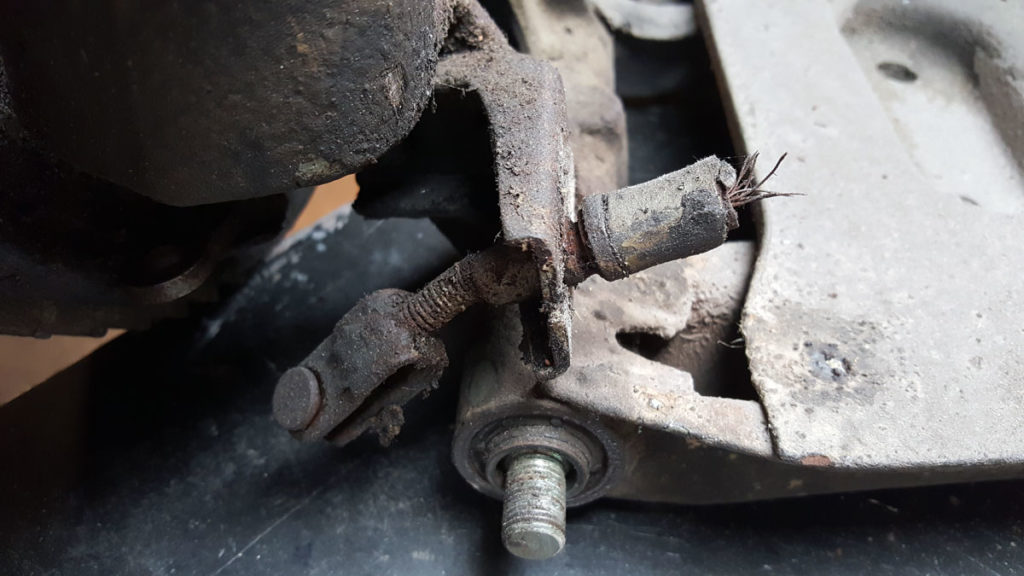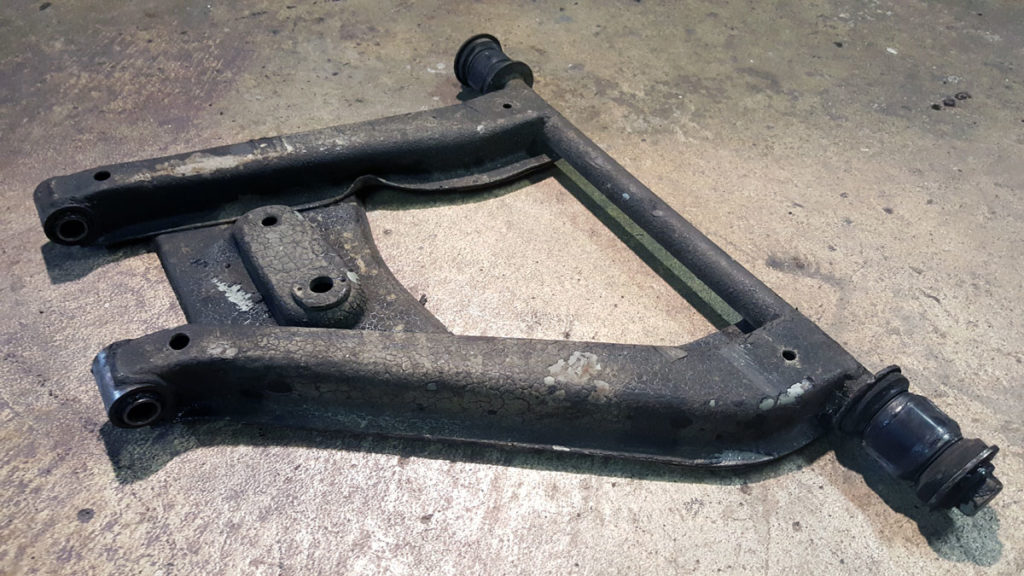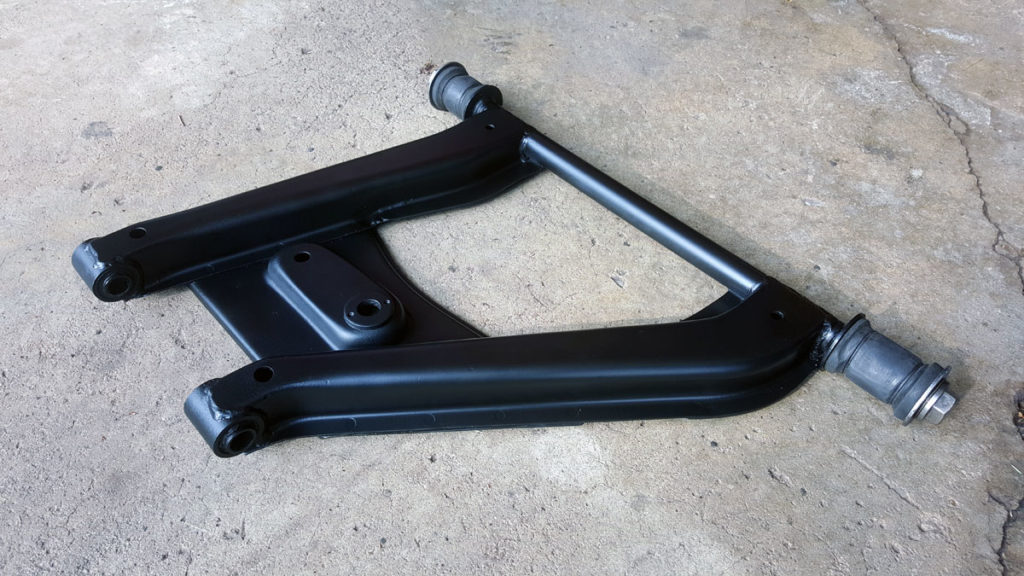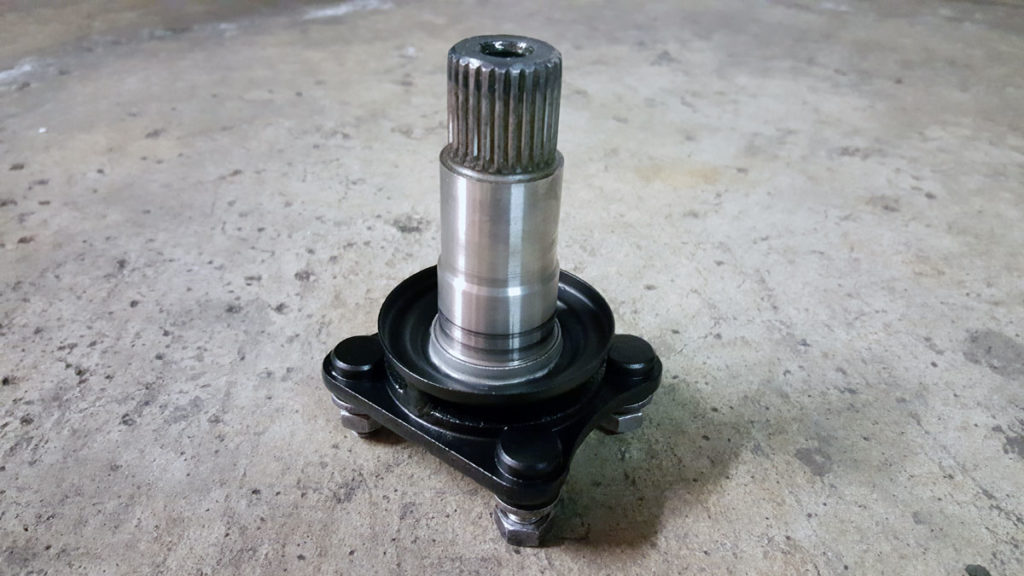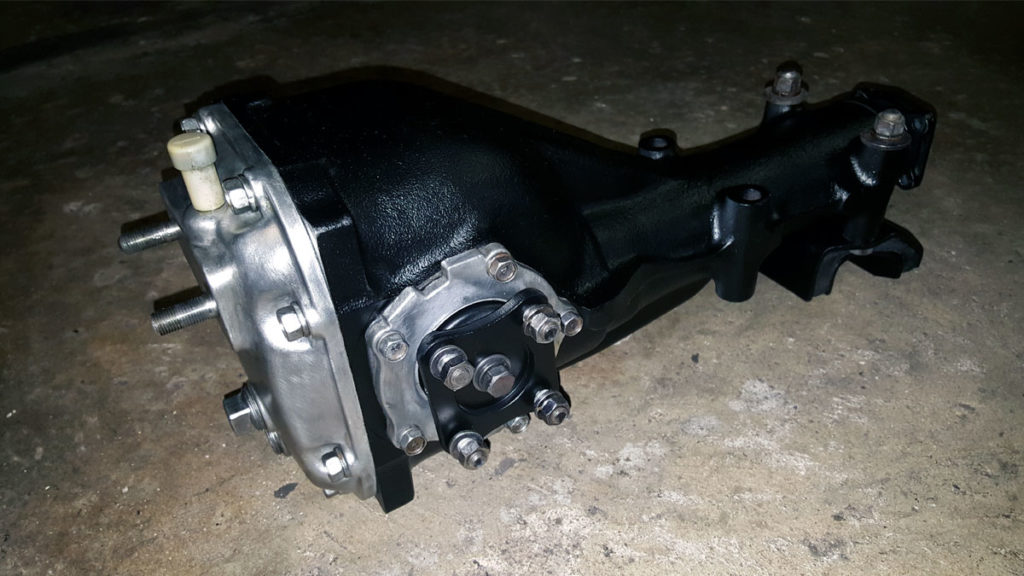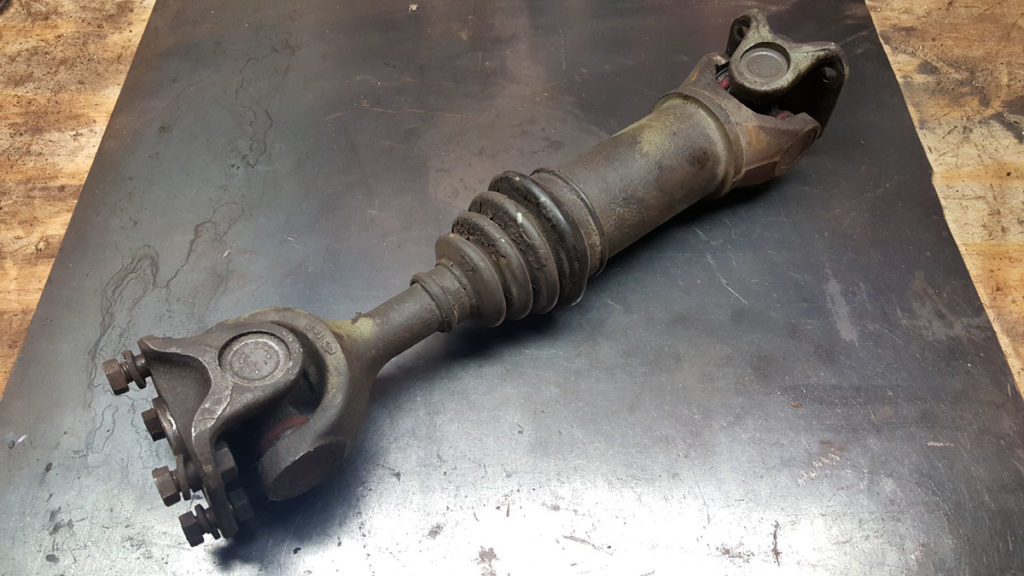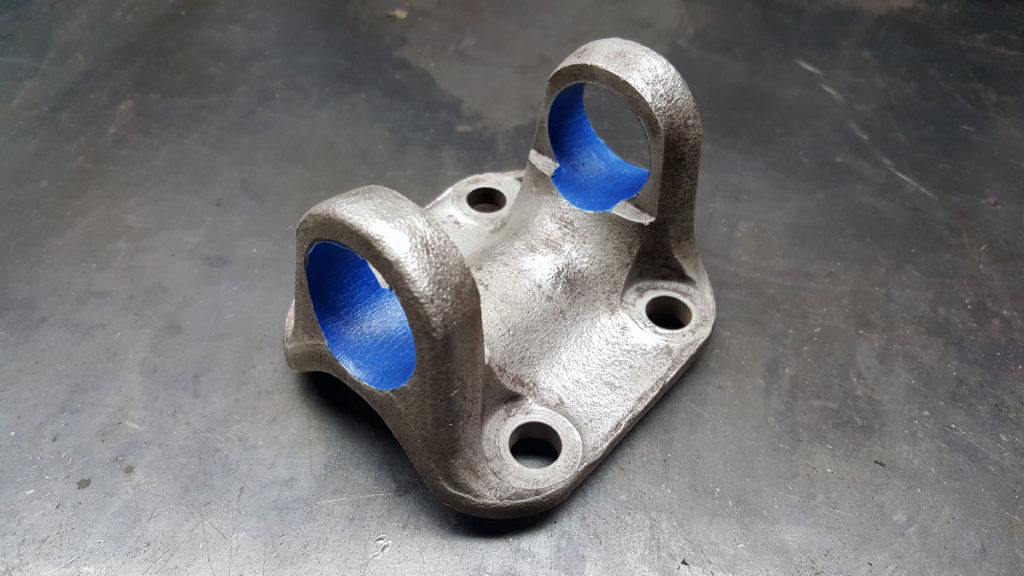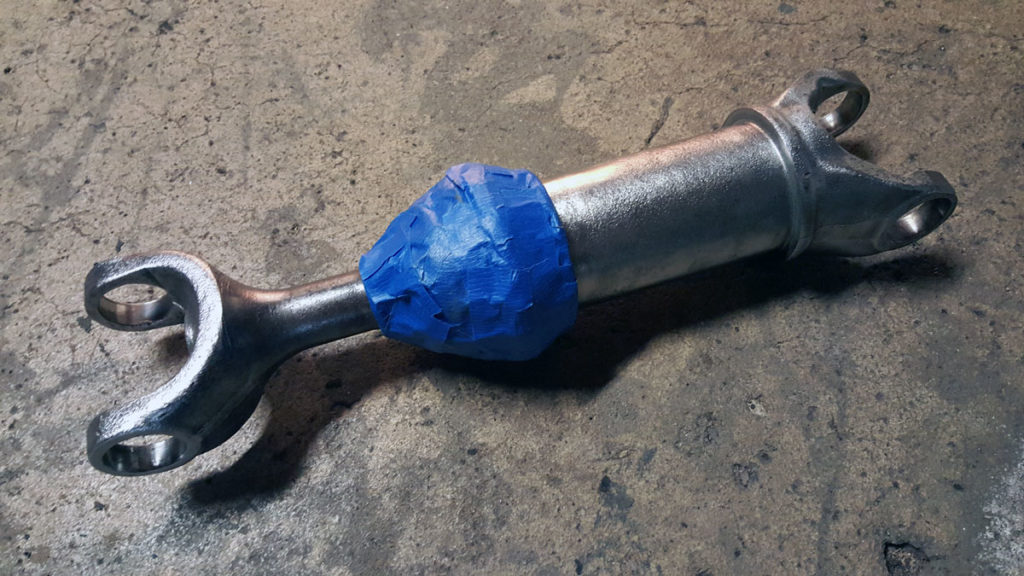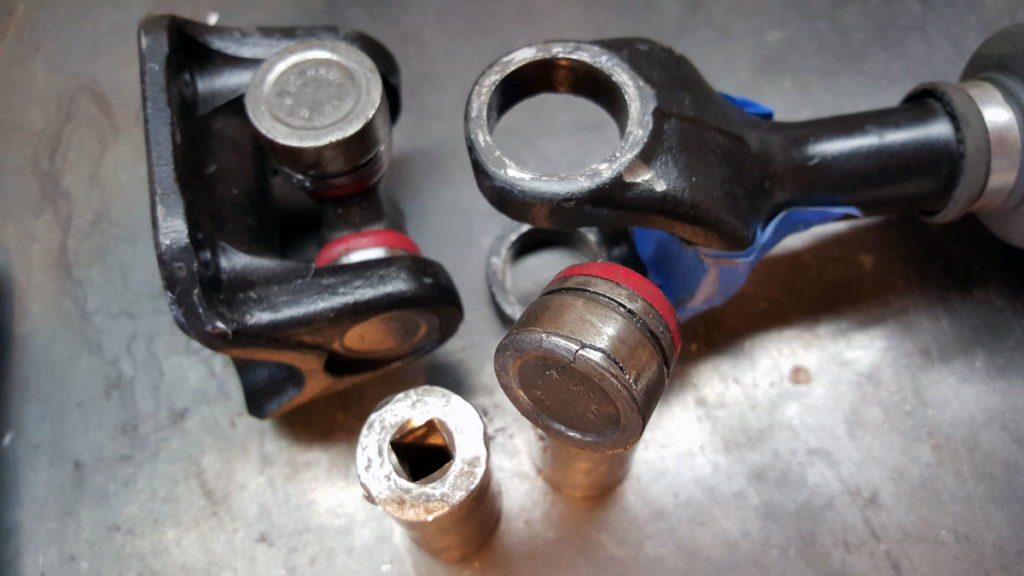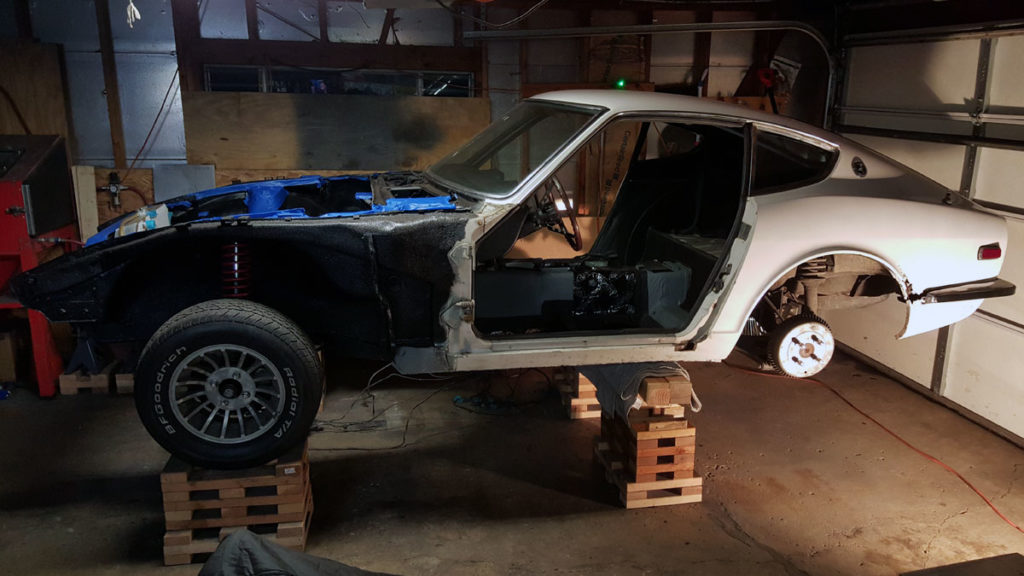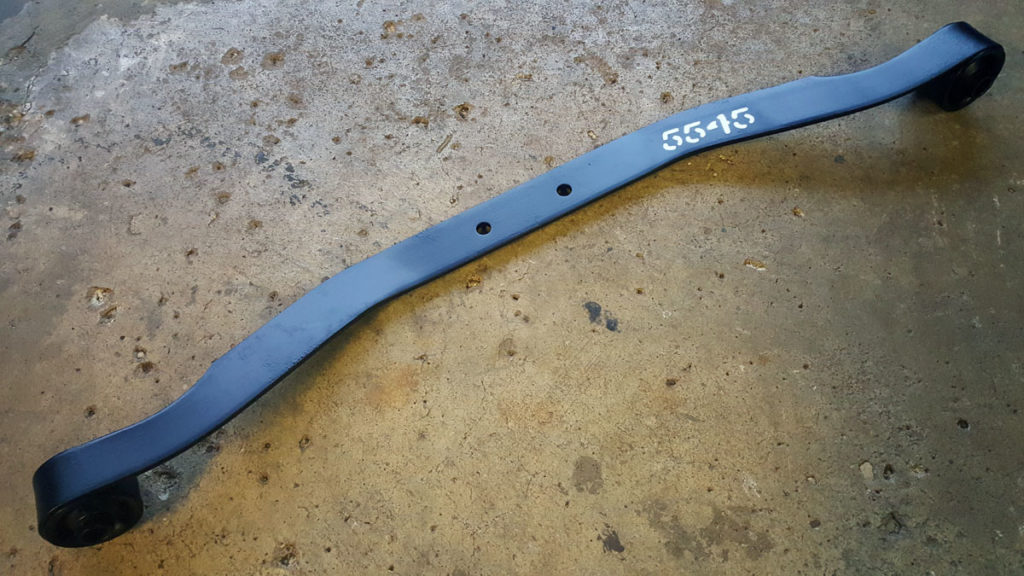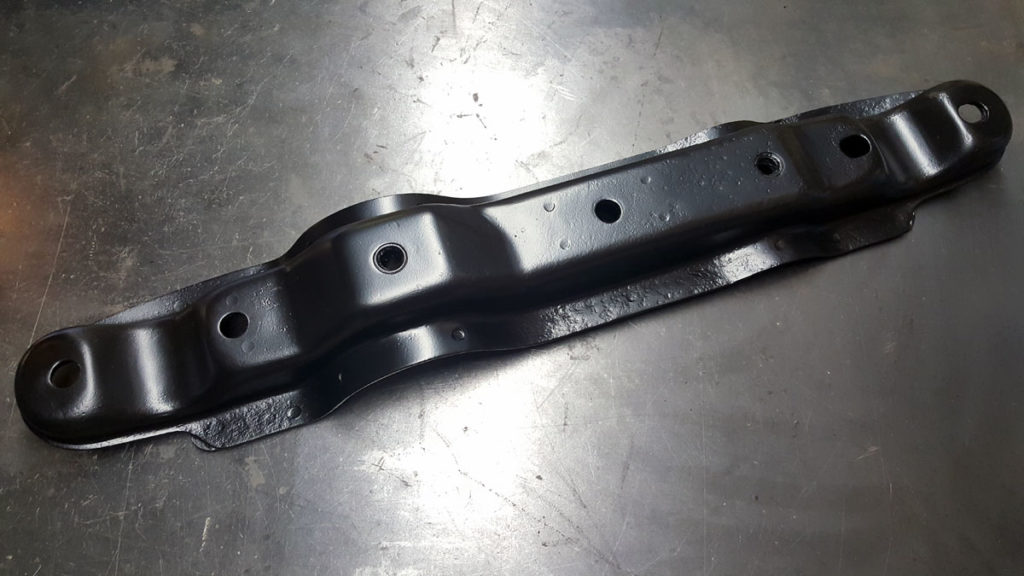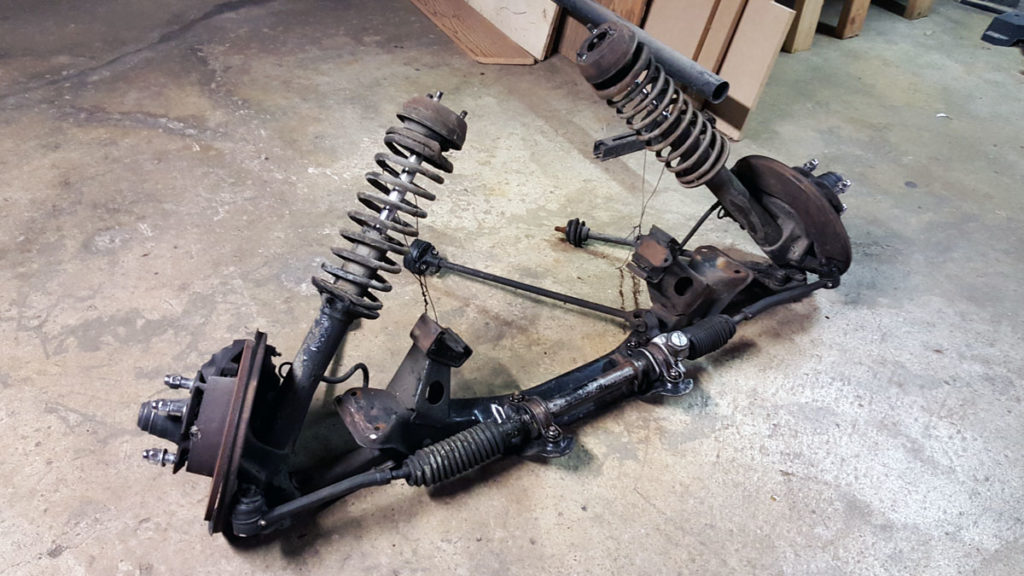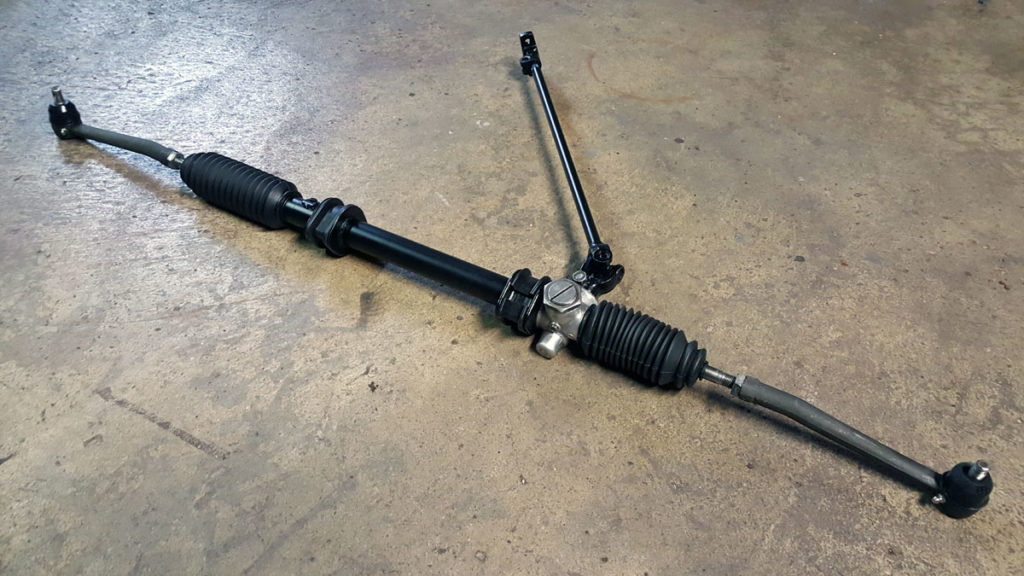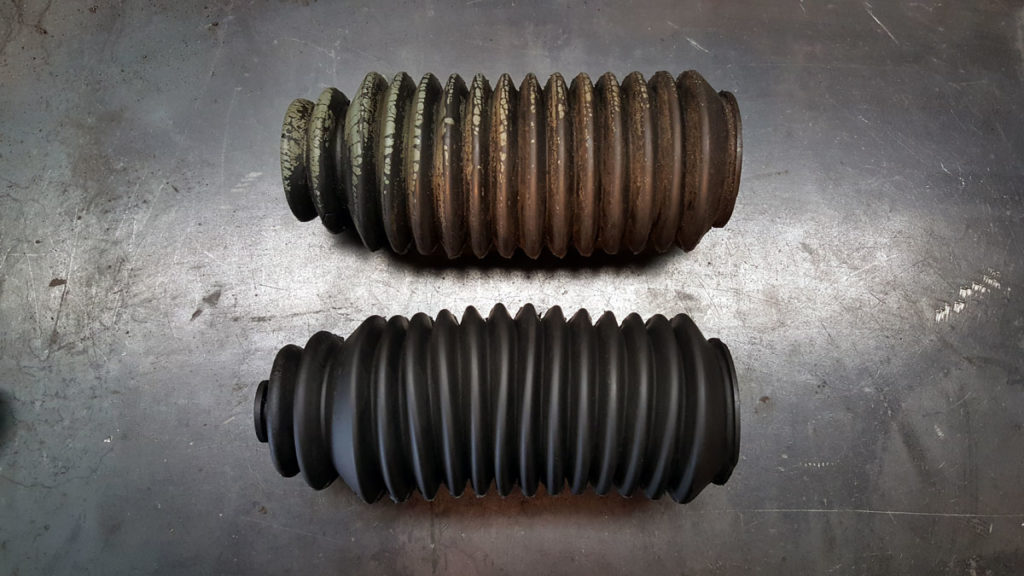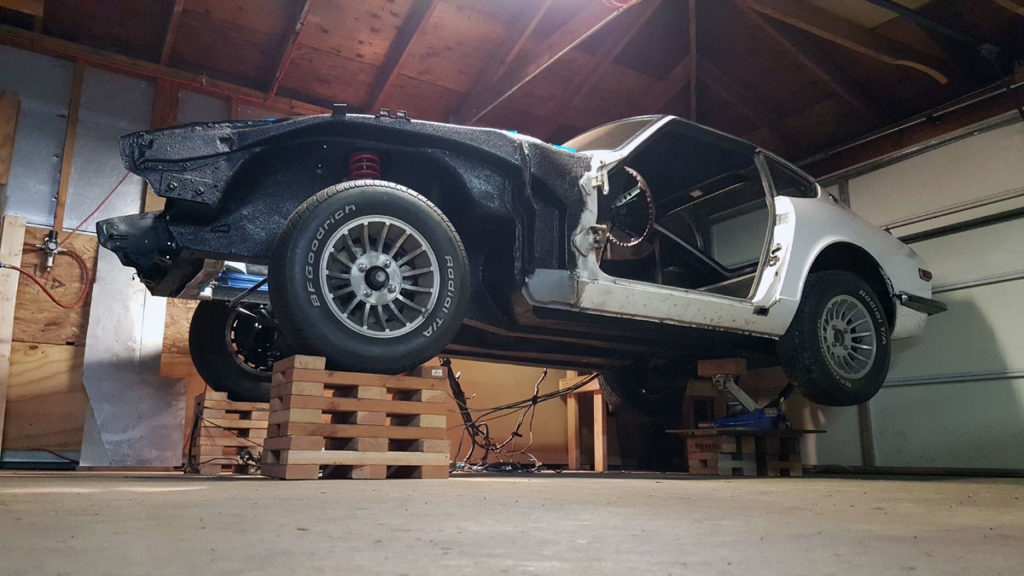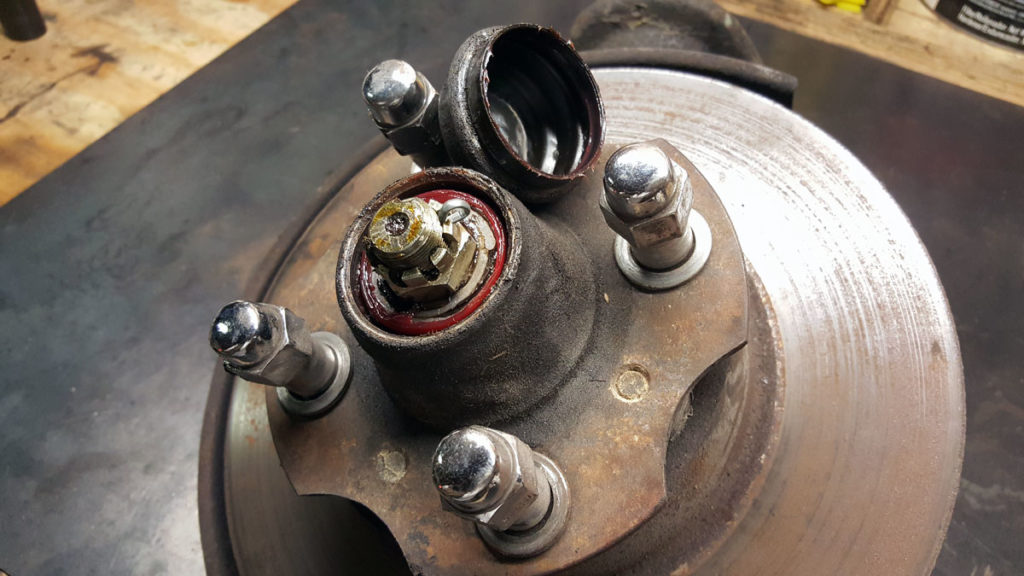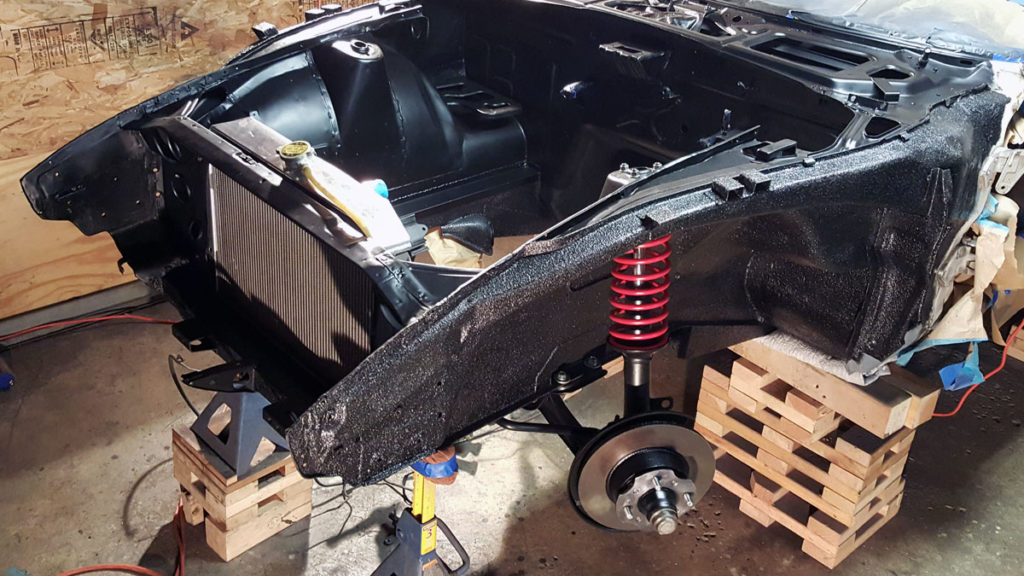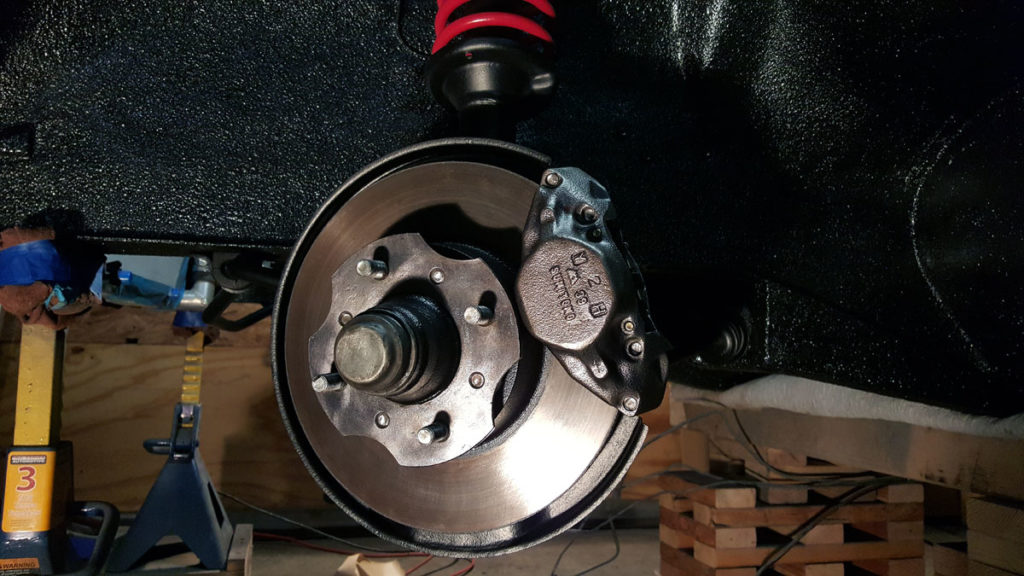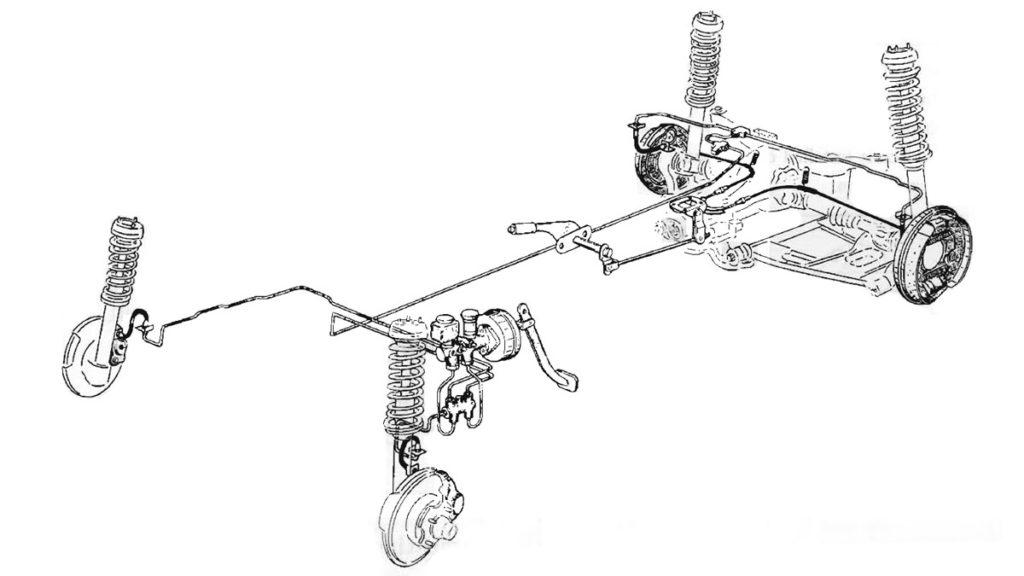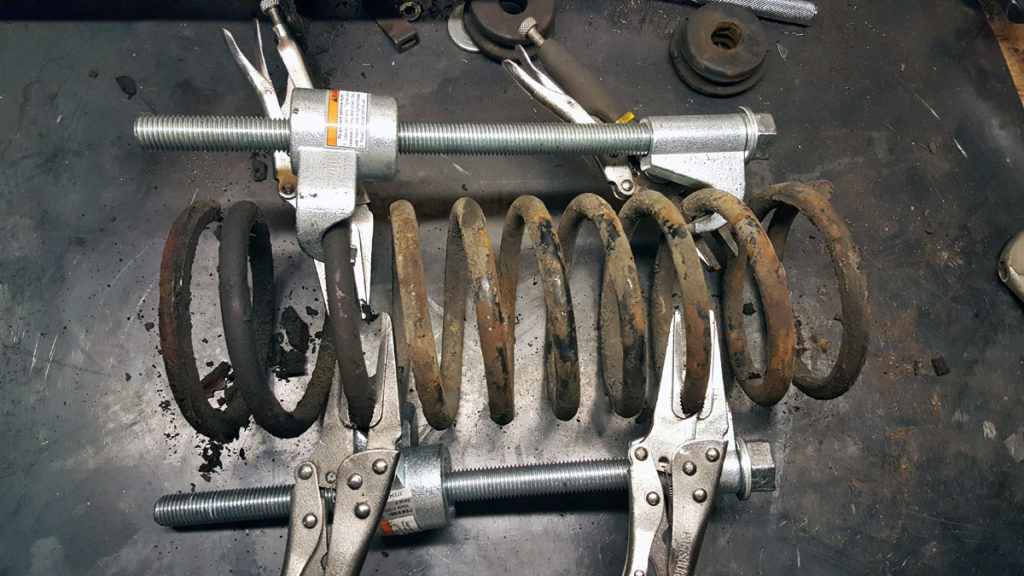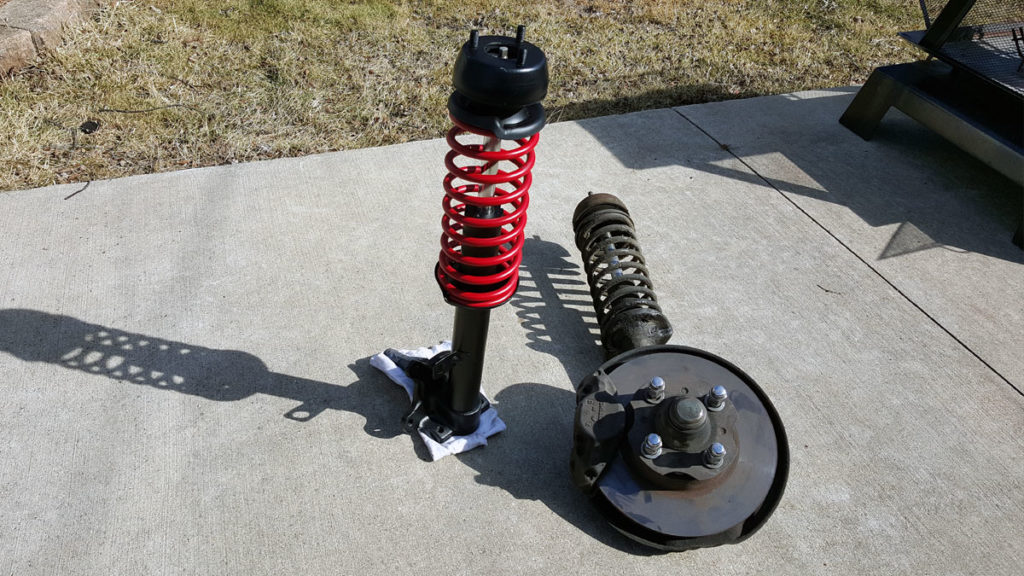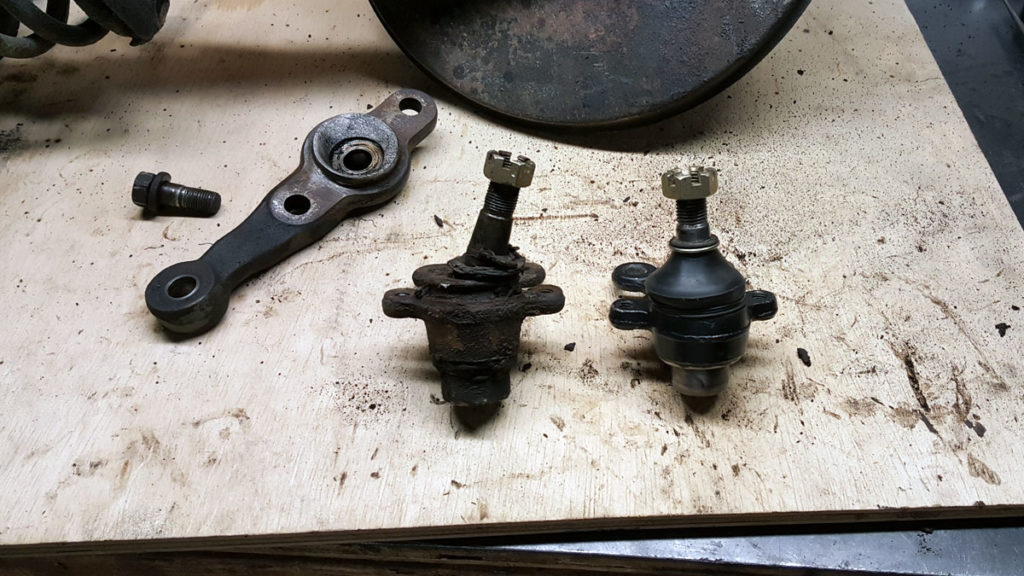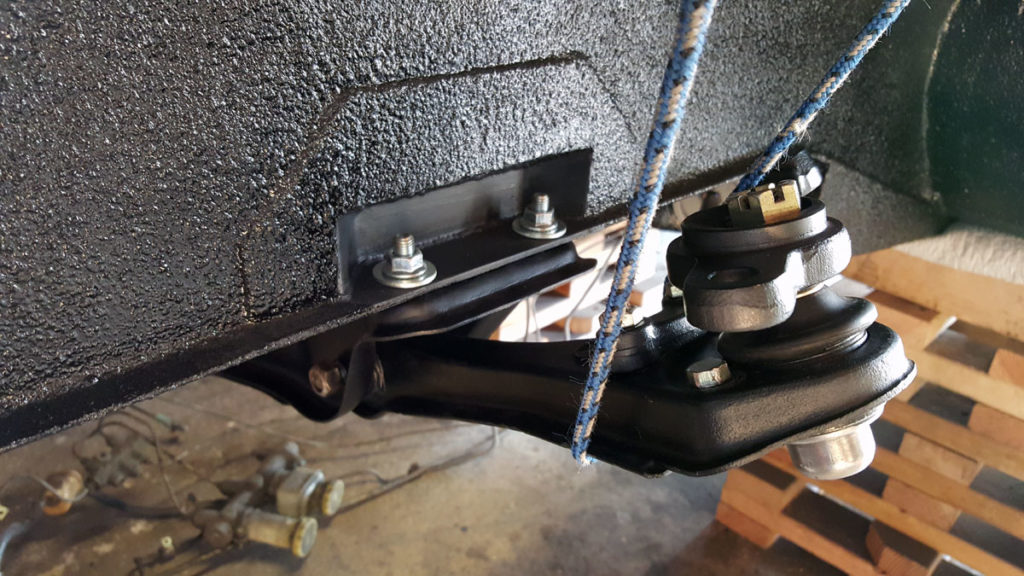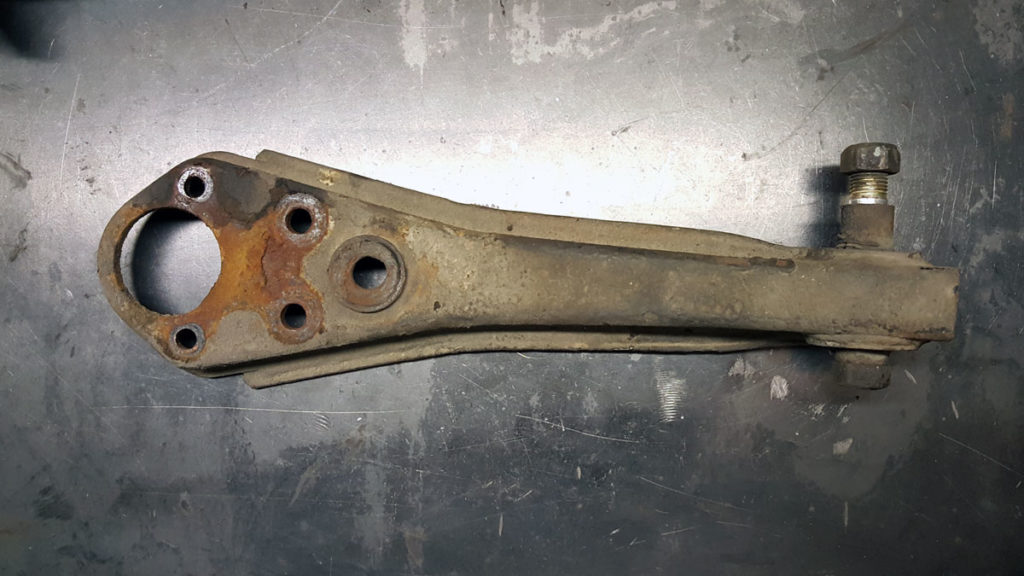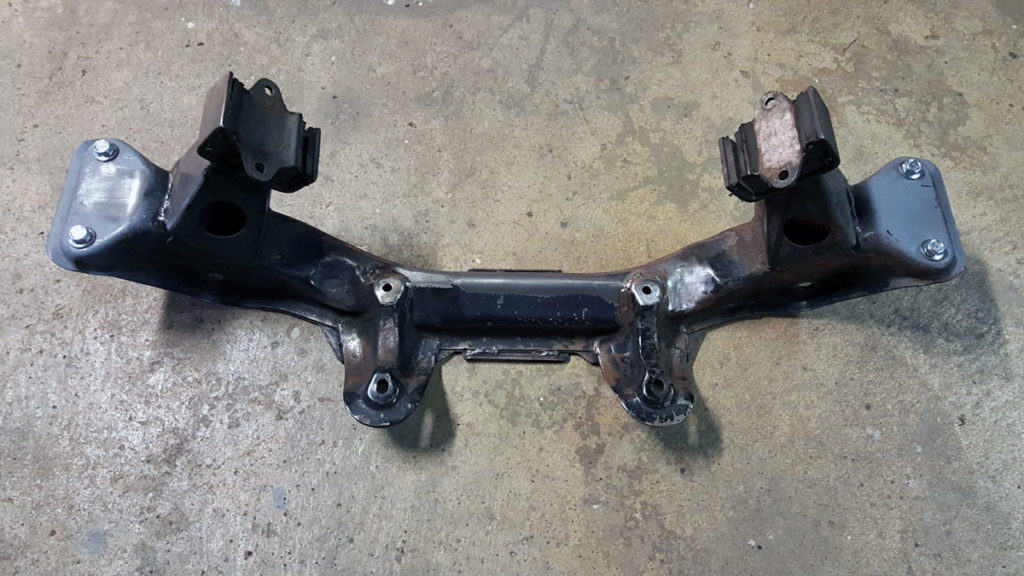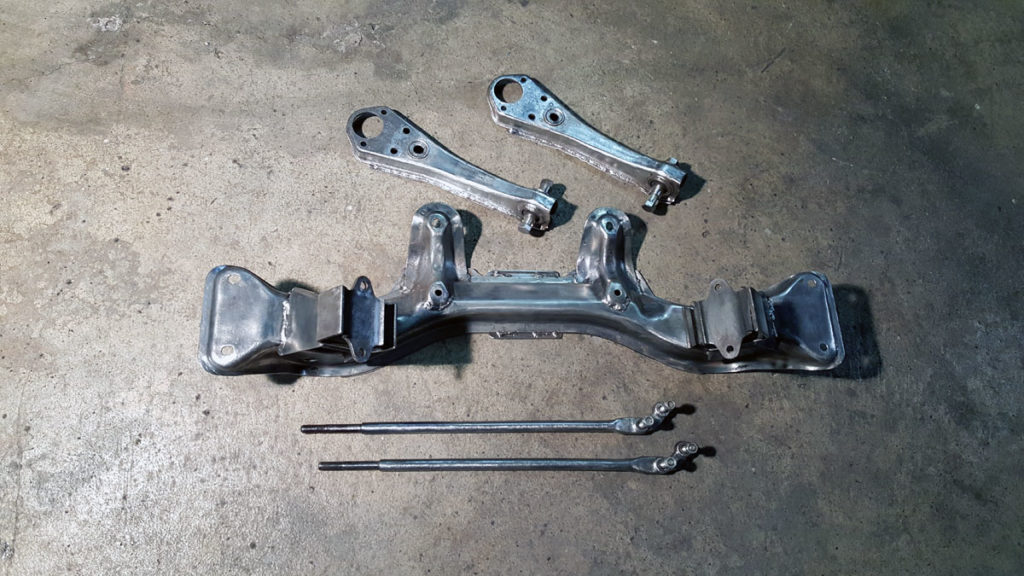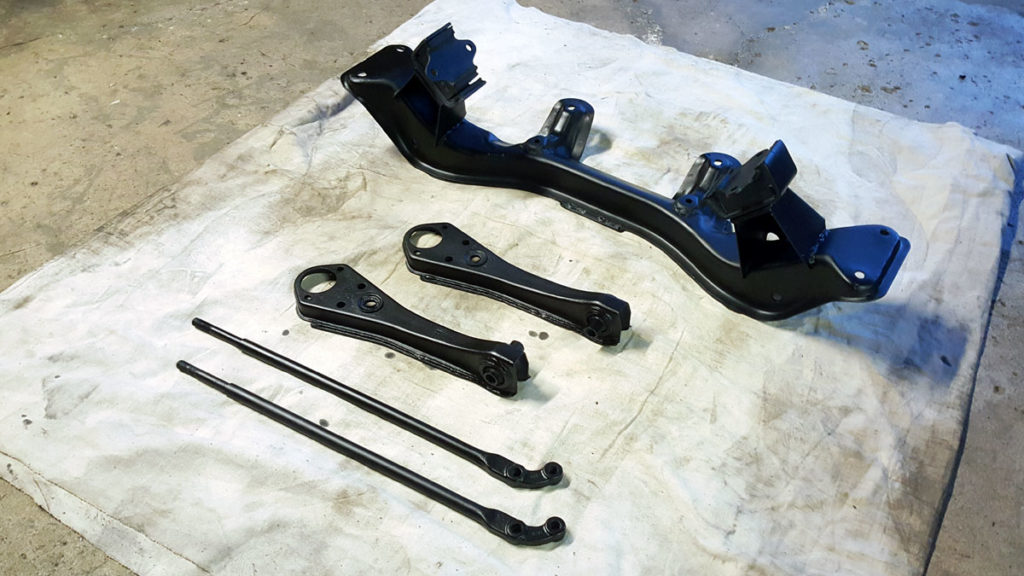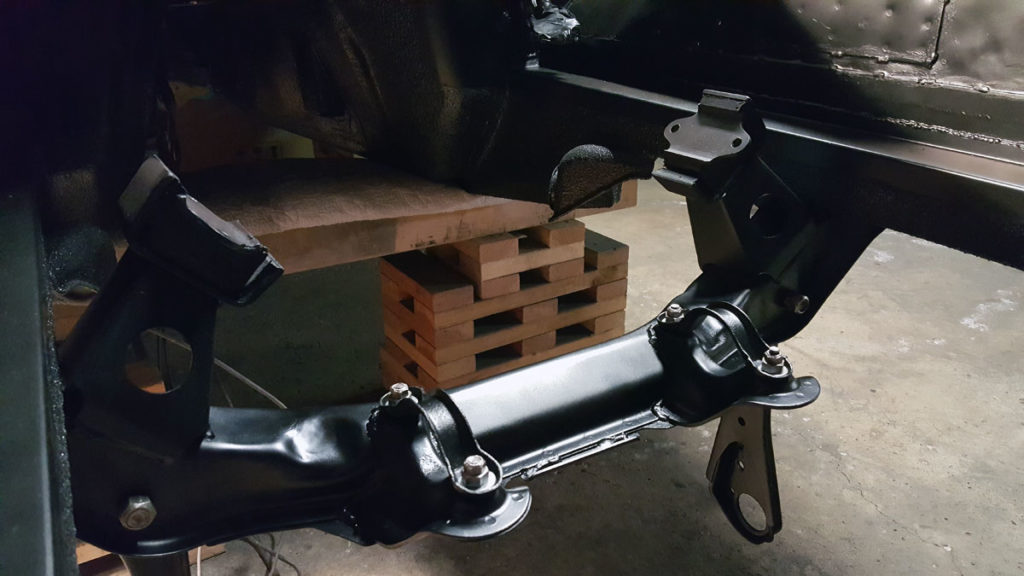I figured my first few attempts to remove the stub axle from the wheel hub failed because the strut assembly wasn’t attached to the car and I couldn’t get a good enough yank on the axle to pull it free. So I pretty much bolted the strut to my workbench. When that didn’t work, I realized that my little slide hammer just wasn’t up to the task. So I built my own.
This bad boy is 3 feet long, weighs in at nearly 20 pounds and bolted directly to the axle shaft.
Three or four good thwacks later and the axle had no choice but to pop right out of the hub. I proceeded to do the other side as well. After the struggle I originally faced, this was so easy it almost felt like cheating.
Next I attached a bearing puller to the axle and had them fully disassembled and ready to rebuild.
Like usual, I took them down to bare metal, rust proofed, primed and painted. The struts weren’t finished at this point, so I wrapped up the stub axles until the struts were ready.
Once the struts were ready, I installed new bearings onto the axles, greased them up and installed them into the newly refinished struts, which you’ll see later.
Also, see the piece of greenish grey pipe in the middle picture above? It was a perfect fit to the inner race of the bearing and was used to drive it into place.
To find a particular page, use the search feature or index.

